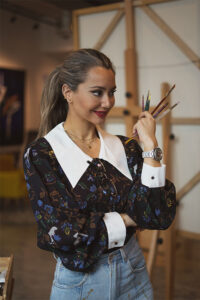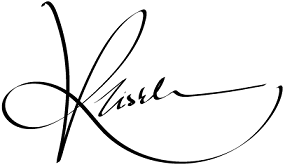Every artist, at some point in their career, faces the formidable challenge of creative blocks. These periods of stagnation can be disheartening, leaving artists feeling frustrated and uninspired. Understanding and overcoming these blocks is crucial for maintaining a vibrant and productive artistic practice. In this blog, we’ll explore the nature of artistic blocks, their impact on artist motivation, and effective strategies to navigate these challenging periods.
Understanding artistic Blocks
Artistic blocks are periods where an artist struggles to generate new ideas or produce work, despite their best efforts. These blocks can stem from various sources, including external pressures, internal doubts, and emotional stress. The key to overcoming a creative block is to first understand its root cause.
Causes of Arty Blocks
-
1.Pressure and Expectations: High expectations from oneself or others can create undue pressure, stifling creativity. The fear of not meeting these expectations can paralyze the creative process.
-
2.Burnout: Continuous work without adequate breaks can lead to burnout. Overworking without rest diminishes creativity and motivation.
-
3.Perfectionism: The desire for perfection can hinder progress. Artists may find themselves stuck in a cycle of self-criticism and revision, unable to move forward.
-
4.Lack of Inspiration: Sometimes, a lack of new experiences or stimuli can result in a artistic block. Without fresh sources of Creative inspiration, creativity may stagnate.
-
5.Emotional and Mental Health Issues: Stress, anxiety, and other mental health challenges can profoundly impact artistic creativity. Addressing these issues is crucial for unlocking artistic potential.
Impact of these Artist block
Arty blocks can significantly affect an artist’s motivation and overall well-being. During these periods, artists might experience:
-
1.Frustration and Self-Doubt: The inability to create can lead to feelings of frustration and self-doubt, which can further exacerbate the block.
-
2.Decreased Productivity: When facing a artistic block, artists may find themselves less productive, which can impact their professional output and personal satisfaction.
-
3.Isolation: Artists might withdraw from their creative communities and support networks, feeling disconnected and isolated during a block.
Strategies for Overcoming Arty Blocks
Overcoming a artistic block requires a combination of practical strategies and a shift in mindset. Here are some effective methods to reignite your artistic creativity:
-
1.Change Your Environment: Sometimes, a change of scenery can stimulate creativity. Try working in a new location, visiting art galleries, or immersing yourself in different environments.
-
2.Set Small, Achievable Goals: Break down your artistic process into smaller, manageable tasks. Setting and achieving these smaller goals can help build momentum and confidence.
-
3.Experiment with New Techniques: Experimenting with new artistic techniques or mediums can spark new ideas and perspectives. Embrace experimentation as a way to rejuvenate your creativity.
-
4.Engage in Creative Activities Outside Your Art: Engage in activities that are not directly related to your art, such as reading, cooking, or traveling. These experiences can provide fresh inspiration and insights.
-
5.Practice Mindfulness and Self-Care: Incorporate mindfulness practices and self-care into your routine. Techniques such as meditation, journaling, and exercise can help reduce stress and clear mental blocks.
-
6.Seek Feedback and Collaboration: Collaborating with other artists or seeking feedback from peers can provide new perspectives and insights. Engaging with a creative community can also offer support and encouragement.
-
7.Allow Yourself to Rest: Sometimes, the best way to overcome a block is to take a break. Allow yourself time to rest and recharge without the pressure to create.
-
8.Reflect on Your Artistic Process: Take time to reflect on your artistic process and identify any patterns or habits that may contribute to blocks. Understanding your process can help you navigate future challenges more effectively.
-
9.Explore New Sources of Inspiration: Seek out new sources of inspiration, such as nature, art history, or personal experiences. Exposure to different stimuli can ignite new ideas and perspectives.
-
10.Stay Positive and Patient: Overcoming a artistic block takes time and patience. Maintain a positive mindset and trust in your ability to overcome challenges and find renewed inspiration.
Embracing Artistic Creativity
Artistic blocks are a natural part of the artistic journey. By understanding their causes and implementing effective strategies, artists can navigate these challenges and rediscover their artist inspiration. Embracing artist creativity involves recognizing the value of persistence, experimenting with new approaches, and nurturing a supportive environment for your artistic process.
Remember, arty blocks are not a reflection of your artistic abilities but rather a temporary obstacle that can be overcome with the right mindset and strategies. Stay patient, keep exploring, and continue to embrace your artistic journey with passion and dedication.
Shop my artwork collection.
Check my digital artwork collection.


